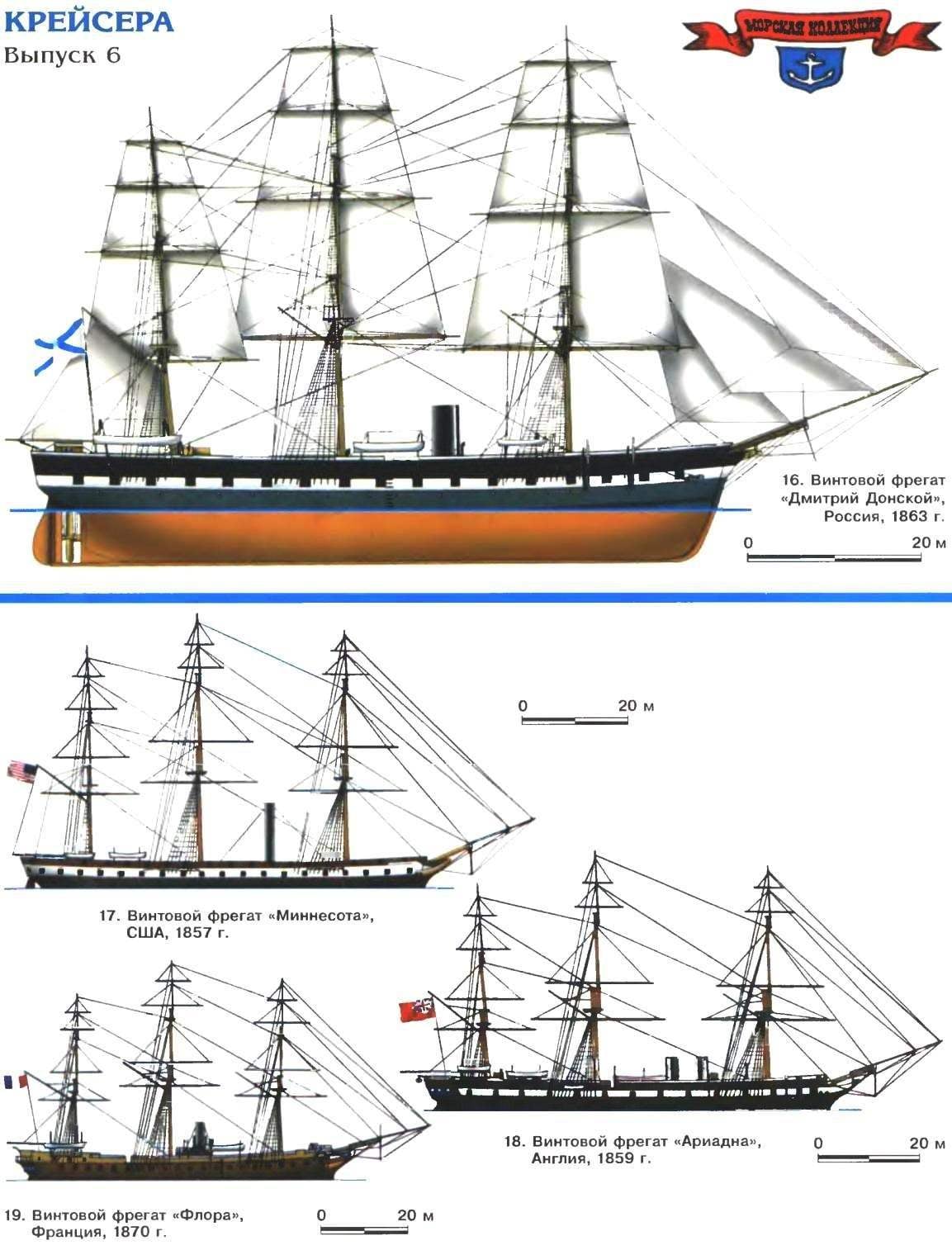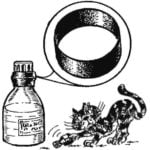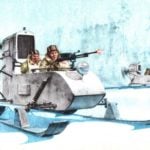 Civil war in USA was suddenly brought to the fore a small improvised cruisers who have achieved outstanding success. However, this does not mean that such ships are immediately received universal recognition. Before, during, and after the exploits of the “Alabama” and “Florida” in all countries legislators naval fashion continued construction of large steam frigates, which was still considered most appropriate for action on ocean communications.
Civil war in USA was suddenly brought to the fore a small improvised cruisers who have achieved outstanding success. However, this does not mean that such ships are immediately received universal recognition. Before, during, and after the exploits of the “Alabama” and “Florida” in all countries legislators naval fashion continued construction of large steam frigates, which was still considered most appropriate for action on ocean communications.
Pioneer the next revolution in this field was made by, oddly enough, the same United States. Date 6 APR 1854 was a milestone in the history of the American steam Navy. That’s when Congress approved the construction of six steam frigates of the first class, having dealt thus with the age of the wheels on military vessels and at the same time throwing the gauntlet of challenge to the former metropolis Again, as during the Berber wars and confrontation with England in the early nineteenth century, it was supposed to create branded cruisers are the strongest ships in the world.
The idea and even its implementation was still “faster than those who are stronger and stronger than all the others”. The major trumps were heavy artillery (though not as numerous in the number of guns as the battleships) and the famous “live” white oak as the material for the body.
To the 50-th years of XIX century American naval artillery has certainly made significant progress. In 1850 John Dahl-Gren had proposed a weapon of his own design, capable of firing explosive grenades at long range and with increased accuracy than previous bomber guns Paxana. Over the next few years, the inventor has managed to create and successfully test 9-, 10 – and even 11-inch samples of shells with a mass of shells from 19.3 to 61.7 kg. Gangrenous guns of different models and is intended to be used for future cruisers.
Of the six approved by Congress “troublemakers” five units of the “Merrimack” was a “real” frigates with a sealed battery, whereas shestoy, “Niagara”, was classified as a sloop, although he was the biggest of the six (5540 m) and the most powerfully armed. However, twelve 280 mm barrels Dahlgren, later replaced by the same number of 305-mm guns were located on the open upper deck, which formally brought a very strong ship to class sloops. It became clear that the old system of division into classes of sailing ships became obsolete.
The prototype for the “Merrimack” and the company was sailing frigate “Congress” in turn, a direct descendent of the famous “oak of the frigates” Hammasa such as “United States” and “Constitution”. Project their armament included twenty-eight 229-mm guns Dahlgren in a sealed battery, added twenty-203 mm barrels over the old model.
However, this time the trick with the “disguised” unconditional superiority of the Americans managed only partially. Although the length of new SuperPreview exceeded that of a British 90-gun screw battleship for a good 15 meters, and artillery power was definitely impressive, the most important thing for the “destroyers of Commerce” requirement — high speed — luckily the British, remained unfulfilled. Five courts have established steam engines of three different types, but they were not too successful. Two-bladed propellers with a diameter of more than 5 m could really provide for couples only 6-node speed (although the maximum record was reached 8.8 per node, in the service of the frigates on average gave only 5.2 per node). The joint action of machinery and sails depending on the wind new supergravity showed 6.5 to 7 nodes — clearly less than pure sailing ships. In addition, overloaded with guns, they had very strong and sharp pitching.
With all these building failures a major nuisance for US was the reaction of Britain To this time the British did not complain about the “unfair play” of their potential opponents (and the possibility of another war the former metropolis and colonies remained very high), and just responded with its own series of similar vessels. In 1855 — 1857 “mistress of the seas” laid down three pairs of frigates, also wooden, but it was comparable in strength overseas. The project, compiled by Balduino Walker, based on the experience gained during the Crimean war. Caught in the history of shipbuilding as a “large frigates Walker”, screw ships with a displacement of 3,700 tons (the first pair — “Doris” and “diadem”) to 5645 t (last “Mersey” and “Orlando”) are considered distant predecessors of battlecruisers Lord Fisher. Fallow they can develop from 11.5 to 13 knots — almost twice as many of their overseas rivals. Not inferior to “English” and armament from twenty to thirty bomber 10-Dujmovic on the gun deck, plus ten or twelve of 32 (the first units) or 64-pounder (last) barrels on the top.
While the British were not satisfied with numerical parity. The six purpose-built frigates were added to the five converted from pure sailing ships still on the stocks. Type “Immortality” also proved to be very successful: his representatives have progressed as 12 knots under sail and under steam. Their Creator, the General overseer of the fleet, William Simons, made an interesting way of improving the strength of a very long wooden case, combining customary for frigates that time, the forecastle and poop deck mounted solid. Although weapons, “English” was a bit weaker than their opponents (thirty-203 mm bomber guns and twenty 32-pontook), of an aggregate of cruising qualities they are not inferior to overseas.
It is appropriate to say a few words about the problem of the strength of the hulls of large frigates. The increasing size forced the engineers to once again think about replacing wood as the primary shipbuilding material; it would seem that the iron has all the advantages: it is more durable and lightweight (when equal to the size of the phone) than wood. Iron merchant and passenger vessels already for decades plied the seas and oceans, showing good quality, but the Admiralty all the major Maritime powers still long shied away from innovation Reasons enough: for example, in England there was such a backlog of shipbuilding timber, which would be enough to not less than one and a half decades. In addition, the underwater parts of the iron housings are rusted and very overgrown in the warmer southern waters, drastically reducing the rate. For many years it was the tradition to cover their one or two layers of wood sheathing, over which is still superimposed thin sheets of copper. Of course, such a “sandwich” is much less subjected to a tropical anti-fouling, but noticeably heavier, and most importantly, raised the cost of iron ships, and so initially went very cheap. The military objected because the thin metal easily penetrated by nuclei, and would not provide the protection that guaranteed thick wooden hull. Therefore, at some point fairly effective was the compromise in the form of a composite set, when iron was forged or cast the keel, the frames (all or part), Fort and sternpost assembled in a metal “skeleton”, which was then covered with several layers of wooden sheathing. The volume ratio of iron and wood in construction is largely dependent on the specific project and its creators. Part of the warships set remained wood, but was strengthened numerous metal beams and timbers, forming sometimes quite complex, but the strong diagonal structure. Especially composite structures are widely used in the construction of relatively small cruisers, the length of which allowed us to maintain sufficient strength in the constant growth of the caliber (and consequently weight) of artillery.

16. Screw frigate “Dmitry Donskoy”, Russia, 1863
Built at the shipyard of the Galley island in St. Petersburg. Displacement 4560 T. maximum Length 82,91 m; width of 15.5 m; draught 7.2 m. the Power of the steam engine 2625 p. C., a speed of 11.5 KTS. Armament: 51 60-pound (196 mm) gun. Excluded from the lists in 1872 Only built two ships: “Dmitry Donskoy and Alexander Nevsky”.
17. Screw frigate “Minnesota”, USA, 1857
Built at the shipyard of the Navy in Washington. Displacement 4835 T. maximum Length of 80.8 m; breadth 15.3 m; draught of 7.98 m. the Capacity of the steam machine of 99.5 HP, speed under steam and sail at 8.5 KTS. Armament: one 254-mm, twenty-eight 229-mm and fourteen 203-mm smoothbore bomber guns. The best of the series of frigates of the programme, 1854,which also included “Merrimack”, “Wabash”, “Roanoke” and “Colorado.” Scrapped in 1901
18. Screw frigate “Ariadne”, England 1859
Built at the shipyard in Deptford. Displacement 4425 T. maximum Length 85,34 m; width 15,24 m; draught 6,5 m Power steam engine 3350 HP,speed 13 KTS. Armament: twenty-four 254-mm smoothbore gun bomber and two 68-pounder guns. A medium size pair of “large frigates Walker”, “Ariadna” and “Galatea”, built in 1859 — 1862, Shortly after the entry into operation of 68 funtouki replaced by the 110-pounder breech-loading guns. Ariadna was afloat for over 60 years and scrapped in 1922
19. Screw frigate flora, France, 1870
Built at the shipyard in Rochefort. The displacement of 3430 m. the Length of the greatest 74,57 m; width of 13.91 m; draught 7,15 m, a Capacity of the steam engine 1465 PS,speed 12 KTS. Armament: four 164-mm and twenty-four 138-mm rifled gun bomber. Built exclusively for a long time: founded in 1847 as a pure sailing frigate almost ready for launching in 1862,however, stood on the slipway until 1869,after which another year was added to Pavo,belatedly for seven years, compared to the same “mazhis’en”, “Femis”, “UNON”, “Sears” and “Hermione”. Excluded from the lists in 1886
However, the age of the net “wood pieces” are not yet passed. On the stocks there were many sailboats, founded in “dowindow” era. Some of them, cut in half and provided with a new section with a steam machine, have found their place in the composition of war fleets. It is clear that such an operation is, in principle, was subject only to the wooden frigates. The same British in addition to the already mentioned “type Immortality” remade in the same way for another seven smaller cruisers types “of Aretusa” and “Aurora” with a displacement of 3300 to 3850 so Their weapons, which included ten 203 mm smoothbore bomber cannons, added forty 32-funtovyj (already little useful at the time), of course, could not be in open battle with transatlantic “super”, but it is suited for other traditional potential enemy — France
While the French themselves were limited to frigates in size medium. Large series of six units of type “Doses” with a displacement of 3765 tons, laid down at the end of the Crimean war, was armed with 56 guns the calibre of which, however, was inferior to the British Then followed a series of changes of sailing ships, a total of more than a dozen, of different tonnage and year of a bookmark (the oldest was the “Semiramis”, laid down at the shipyard in Rochefort for 30 years before launching).
Formally, all of the “perestroika” was listed as a 56 or 46 cannon, but the gap in the artillery forced the French to quickly replace the old 32-funtouki on 138 mm and 164 mm bomber weapons in much smaller quantities (24 to 36 guns), after which they are cruisers though, and continued to cede at the artillery power of the English and American, but not so much.
Not remained aloof from passions large screw frigates, and Russia. However, our firstborn was pursued by continuous failures. Served for only one year “Archimedes” was followed by “Polkan” and “Ilya Muromets”, built in Arkhangelsk and crossed the Baltic sea only to be flooded in Kronstadt during the Crimean war. But Russian admirals and ship builders eagerly eyeing all foreign novelties. In 1858 came into operation, of course, outstanding for our country and the world shipbuilding industry 70-gun “General-Admiral” built in the USA at the new York shipyard of Webb and exceeds in tonnage even such giant, as “Niagara”. In contrast to the “supermercati”, the Russian frigate showed good performance and exceeded the tests of 12 knots. Ordered at the same time in France, “Svetlana” in accordance with the French tradition had a much more modest size (length 70 m, a displacement of 3200 tons) and rate (10.5 per node) and was carrying only 40 guns.
A few years later in “aliens” was followed by the domestic ships of the same class. Initially in the construction, frigates, there is a strong inconsistency: each Builder to create a project in their forces and possibilities. In the same 1860 on the water went, in Kronstadt 4408-ton “Oleg”, in Arkhangelsk — 3837-ton “Peresvet” and Ochenski shipyard in St. Petersburg is noticeably smaller “Oslyabya” (2,960 MT). If tva had the first British steam engine the most known firms of the “Model” and the plant Carr and MacPherson, the “Oslabya” established domestic, made in the “Galvanic-plastic institution.” In the end, the smallest of the large frigates were also the slowest, barely reaching 9.5 per node vs. 10.5 — 11 cruisers with 1аруСежными mechanisms
The composite design of the French “Svetlana” was the basis for the first production of the Russian frigate “Dmitry Donskoy” and “Alexander Nevsky” launched in St. Petersburg in 1861. In their project, Russian engineers have successfully crossed French and American experience. The formidable pair was one the largest cruisers of its time. But they are clearly going to Eclipse next “two” — “Sevastopol” and “Petropavlovsk”. Project 60-gun frigates with a displacement of about 6,300 tons and a length 90,8 — 91,4 m with a speed under steam of nearly 12 knots was a formidable force. However, the story is ordered these vehicles otherwise…
It is actually such a significant success of the designers in the creation of large cruisers was virtually useless. In 1859, before many of the above fighting ships in Britain was laid four units, suddenly overturned the old balance of forces at sea. Two very large vehicle, 9200-ton “warrior” and “black Prince” and two smaller, 6150-ton “defense” and “Rezistans”, had an iron hull, was first divided into a large number (about a hundred) watertight compartments, and could develop the course from 11 to 14 knots. But, most importantly, they carried the armor belt along the entire length of the waterline or most of it. Formally, the remaining frigates and belongs to the 4th class ranking, they exceed the strength of not just any cruiser, but any battleship of the time. What could end up a duel between the battleship and the armored vehicle, clearly demonstrated the famous battle in HAMPTON Roads March 8, 1862.
The frigate “Merrimack”, returning after a long stay in the Pacific, was captured by the southerners and converted into the ironclad “Virginia.” This strange creature with the body, barely speaking of water, went on a RAID where there was a squadron of northerners, which included among others two former sistership “Merrimack”-“Virginia”, “Roanoke” and “Minnesota.” Battleship southerners began with the sinking of the prototype “super” — sailing frigate “President” and continued the destruction of “Timeberland”. Next in line was “Minnesota”, jumped ashore in an attempt to avoid execution. Complete rout was prevented only by the famous “Monitor”, appeared in time for the duel and took fire.
Despite relatively successful for northerners outcome (armadillos diverged, “draw” and the remnants of the squadron was saved), the result of the battle played a fatal role in the fate of the wooden cruisers all over the world. Unarmored frigates could not oppose the armadillos, their happiness, yet completely unseaworthy. But the emergence of high-speed vysokomarochnogo ocean “Warrior” set class large cruisers a choice — change or die.
V. KOFMAN



